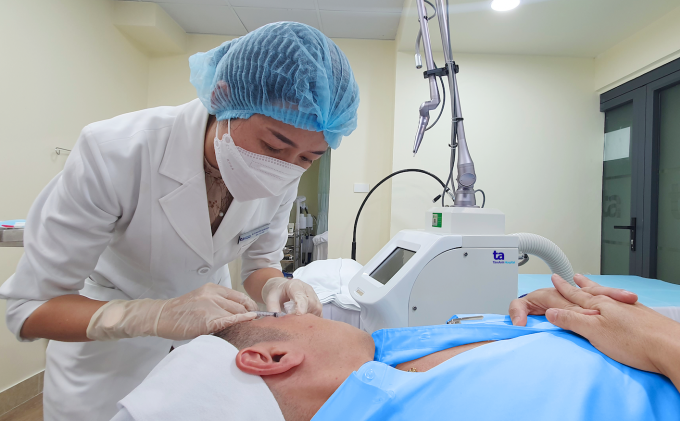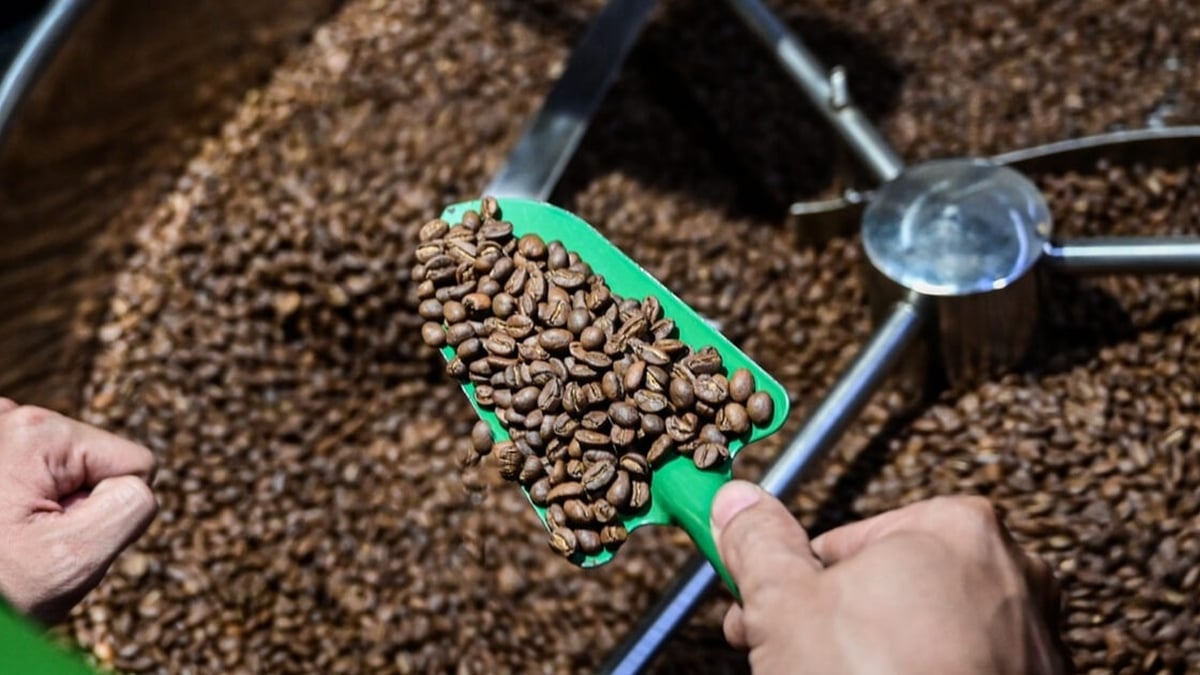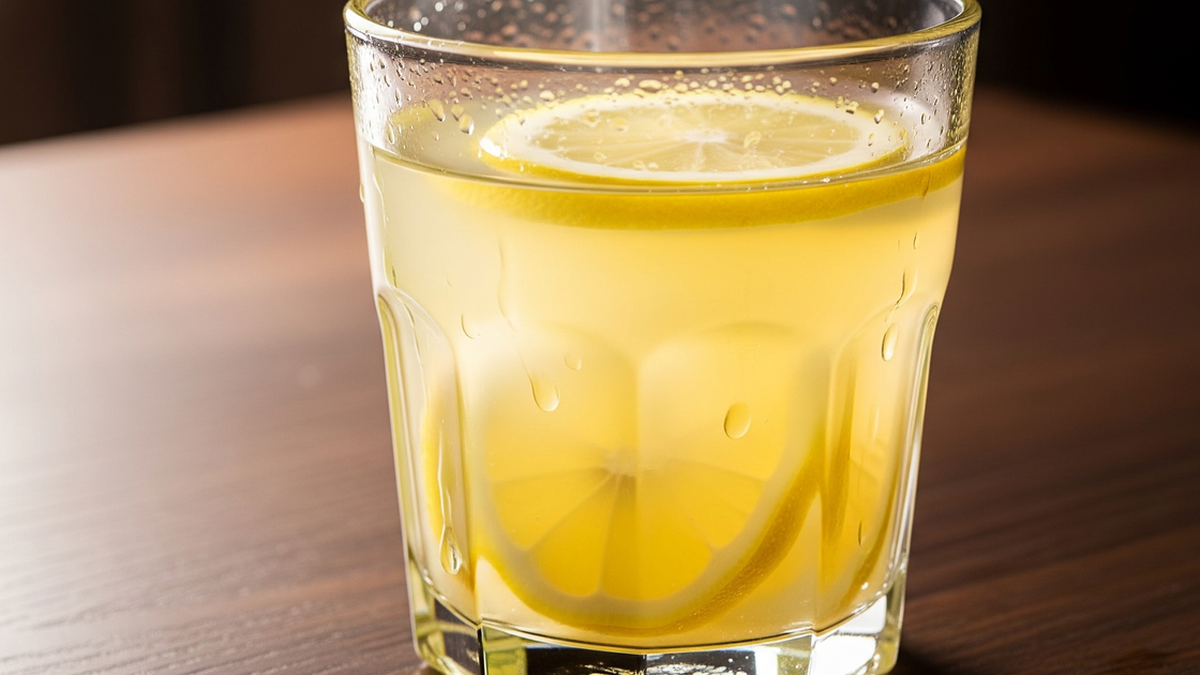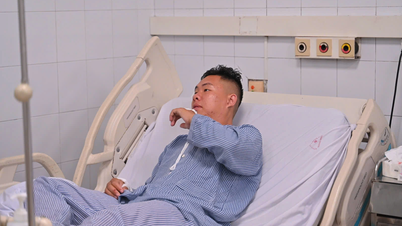Both have the effect of removing wrinkles and rejuvenating the skin, but filler fills in the defect area, while botox helps slim the treated area.
Master, Doctor, Doctor Pham Truong An, Dermatology - Cosmetic Dermatology Specialist, Tam Anh General Hospital, Ho Chi Minh City, said that filler and botox injections are popular internal cosmetic methods to slow down the skin aging process safely and effectively without surgery. The common point of these two methods is that they use small needles and are performed quickly, about 15-30 minutes. However, fillers and botox have many differences.
Ingredient
Fillers are cross-linked synthetic or biological products used to replace or increase lost volume in skin and soft tissue. There are many types of fillers, depending on the stability of the main active ingredient, the most common today are hyaluronic acid (HA), collagen, calcium hydroxylapatite (CaHA), poly-L-lactic acid (PLLA), polymethylmethacrylate (PMMA).
Meanwhile, botox (short for botulinum toxin type A) is derived from the bacterium Clostridium botulinum. This is a gram-positive, anaerobic bacterium that is extremely toxic to the nervous system. Botulinum toxin used in cosmetic procedures is usually type A, with doses at a level that does not cause poisoning.
Mechanism of action and uses
When the small needle injects filler into the skin, these substances form a thick mass of tissue under the skin, wrinkles. This mass of tissue shapes and fills in sunken areas such as sunken cheeks, sunken eyes, deep nasolabial folds, and receding chins. From there, facial contours such as a V-line chin, a high nose bridge, or thick lips are created, erasing static wrinkles (wrinkles that can be seen even when the face is motionless).
Filler ingredients also contain skin care active ingredients, such as collagen and HA, which help rejuvenate the skin, maintain elasticity, firmness, and shine.
Botox works by inhibiting nerve conduction (blocking signals transmitted from nerves to muscles). The muscle mass in the injected area relaxes, reducing its ability to function, limiting dynamic wrinkles that appear when the muscle moves.
Botox is used to treat muscle or nerve disorders. In the cosmetic industry, it is a treatment for many problems such as slimming the jaw, biceps, and calves; correcting gummy smiles; reducing excessive sweating (hands, armpits) and reducing dynamic wrinkles (frown lines, crow's feet, rabbit wrinkles). This method can also tighten pores, reduce oiliness, and promote the production of elastin and collagen - a pair of proteins that help increase firmness and rejuvenate the skin.

Doctor injects botox to remove dynamic wrinkles at the Dermatology - Skin Aesthetics Department, Tam Anh General Hospital, Ho Chi Minh City. Photo: Anh Thu
Time effective
Filler injections are effective immediately, the stability of the filler increases over a few weeks. The beauty results last from several months to two years, depending on the type of product, the treatment location, the patient's constitution and the doctor's skills.
Botox takes effect after a few days and reaches its maximum effect after two weeks of injection, lasting 3-6 months. Due to the body's natural elimination mechanism, botox gradually loses its effectiveness.
Post-injection care
Doctor Truong An recommends not using alcohol or stimulants because they have a negative impact on the treatment results and recovery process after filler and botox injections.
These two substances dissolve faster when exposed to high temperatures or rubbing. Touching, kneading, massaging the injection area, or laughing loudly or getting angry can cause the injection area to deform or move the filler to another area.
To reduce complications and recover faster, within 10 days after filler injection, limit impact on the injection area (steam bath, massage, strong facial expressions) and strenuous exercise.
If filler is injected into the cheek or chin area, avoid lying face down, lying on your side, or supporting or resting your chin. Avoid applying makeup for 1-2 days after injection. Cosmetics that get on the injection site can cause infection.
After Botox injections, patients should avoid strenuous exercise or drinking too much caffeine because it can cause dehydration and increase heart rate. Increased heart rate and blood flow can cause the breakdown of Botox to occur more quickly.
Anh Thu
| Readers send questions about skin aesthetics here for doctors to answer |
Source link























![[Photo] National Assembly Chairman Tran Thanh Man visits Vietnamese Heroic Mother Ta Thi Tran](https://vphoto.vietnam.vn/thumb/1200x675/vietnam/resource/IMAGE/2025/7/20/765c0bd057dd44ad83ab89fe0255b783)









































































Comment (0)